Here's an overview of how jeans evolved over time as well as where our essential pairs originate. Before becoming a fashion staple, jeans have gone a long way and they're coming even further.

Most people don’t even know exactly how many blue jeans they have in their closet. They just know that jeans are always there for you. They feel good, they look good, they go with everything and they’re accepted everywhere.
And unless you’re a vampire, jeans have existed the entire time you’ve been alive. But the story you’ve been told about jeans isn’t really the whole story of jeans. See how all your favorite features of jeans evolved and how styles changed over time, turning blue jeans from a pair of miner’s pants into the go-anywhere fashion item that everyone has to own.
Table of Contents
- Overview
- Early 1800s
- 1870
- 1880
- 1890
- 1900
- 1910
- 1920
- 1930
- 1940
- 1950
- 1960
- 1970
- 1980
- 1990
- 2000
- 2010
- 2020
Overview
Jeans started out with no belt loops and even without the color blue. They weren’t originally invented by Levi Strauss, though that’s probably what you’ve heard, and the styles you wear today aren’t as new as you might think. The truth is, you can thank an angry miner’s wife and a tailor who was trying to make her happy for all the blue jeans you have in your closet right now. The history of jeans has a different beginning than you think!
Early 1800s
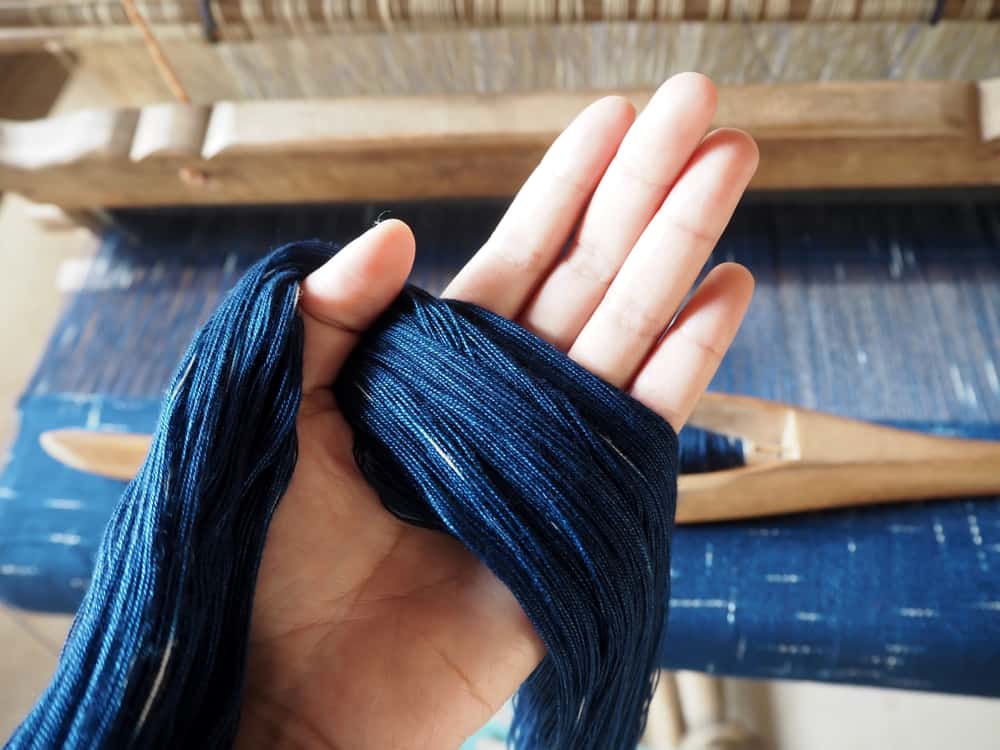
Denim was first created in France. However, exactly when it was created, and by who, remains a mystery. The material was first known as “serge de Nimes,” which became “denim.”
The denim was dyed blue because of organic indigo dye, which just happened to be handy when textile makers first discovered the composition of the fabric…or so the legend goes. Indigo creates a blue color that comes from the plant itself. In the more modern era, jeans are made with natural and synthetic indigo.
According to the story, the first denim cloth was a mistake. Weavers were attempting to make a popular type of Italian fabric. They had dyed one set of threads blue using the indigo and left the other white, then wove them together. Instead of replicating the Italian fabric, however, they had created a brand-new cloth that would change the fashion world: denim fabric.
1870
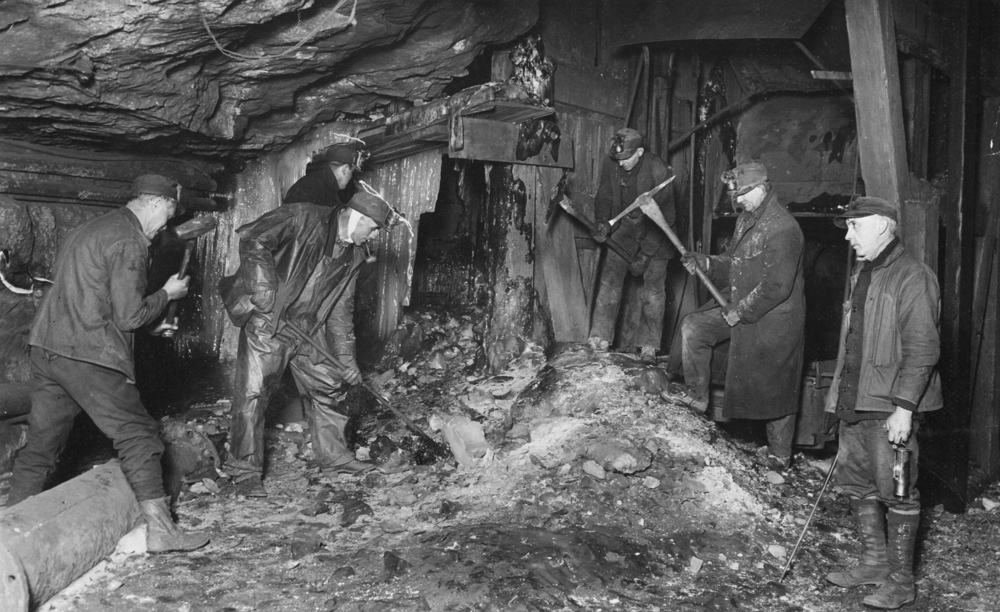
1871: Jacob Davis of Reno, Nevada was in the middle of his workday. He was a tailor by trade, making cotton pants for local miners in the area. They needed to buy new pants a lot. The pockets and the button fly front were constantly getting torn and wearing out, unable to withstand the daily rigors of working in the mines.
Davis got an earful all about it when a frustrated miner’s wife came into the shop to complain about the pants he was making. But the fact was, she was right. Davis decided then and there to come up with a solution.
He looked around his shop and began studying the metal fasteners that he used for harnesses and other items he made. He decided that the fasteners could be used to strengthen the pants he had been creating for the miners. This is how riveted pants were invented, according to the Smithsonian.
1872: Miners flocked to the tailor shop to buy the reinforced work pants that were now being offered. Tailor Jacob Davis made his trousers, or pants, out of duck cloth, a tough canvas material that’s made from cotton. The new workwear was catching on quick and demand for the item rose.
He knew he had a hit on his hands. But Davis had little money. What he needed was someone who was successful in business.
Davis turned to Levi Strauss, a German man who had recently moved to San Francisco to open up a branch of his family’s highly successful dry goods store. Davis shopped at the store frequently, making regular trips to get items he needed for his own business, including the duck cotton cloth he was using for his new style of trousers. Davis and Strauss formed a partnership, agreeing to work together to sell the pants.
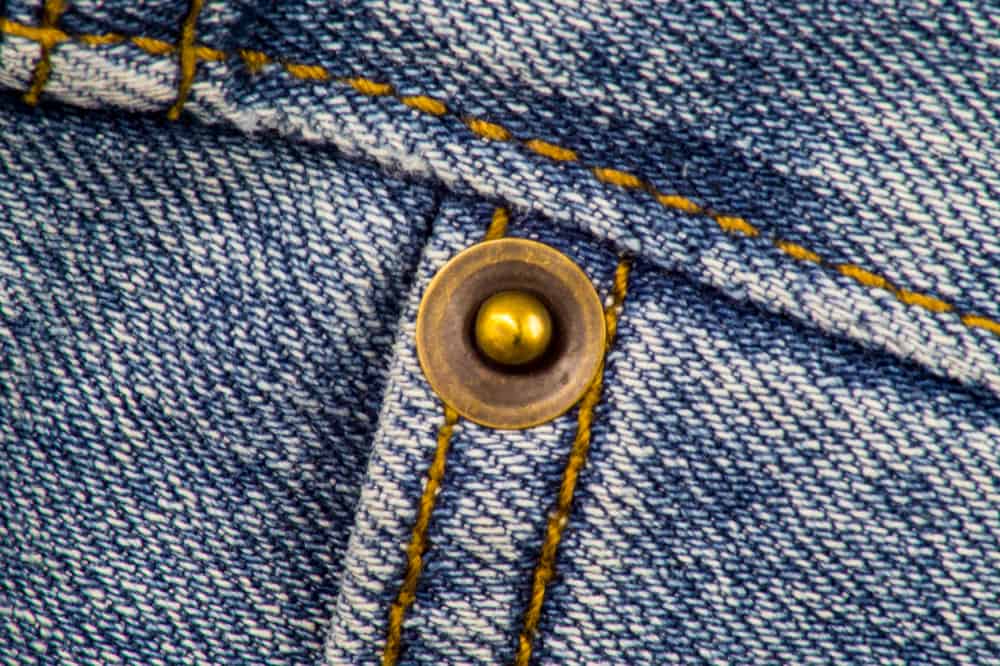
1873: On May 20, Levi Strauss and Jacob Davis took out a patent for their reinforced pants. The official patent was named “Improvement in Fastening Pocket-Openings.” They didn’t know it yet, but this was the official birth of blue jean styles. The miner’s pants would be changed and refined over time. And it all started with a copper rivet.
They called the pants “waist overalls” at that time and began hiring seamstresses to make them. The women worked out of their own homes, following the patterns and instructions given to them by Davis.
1880
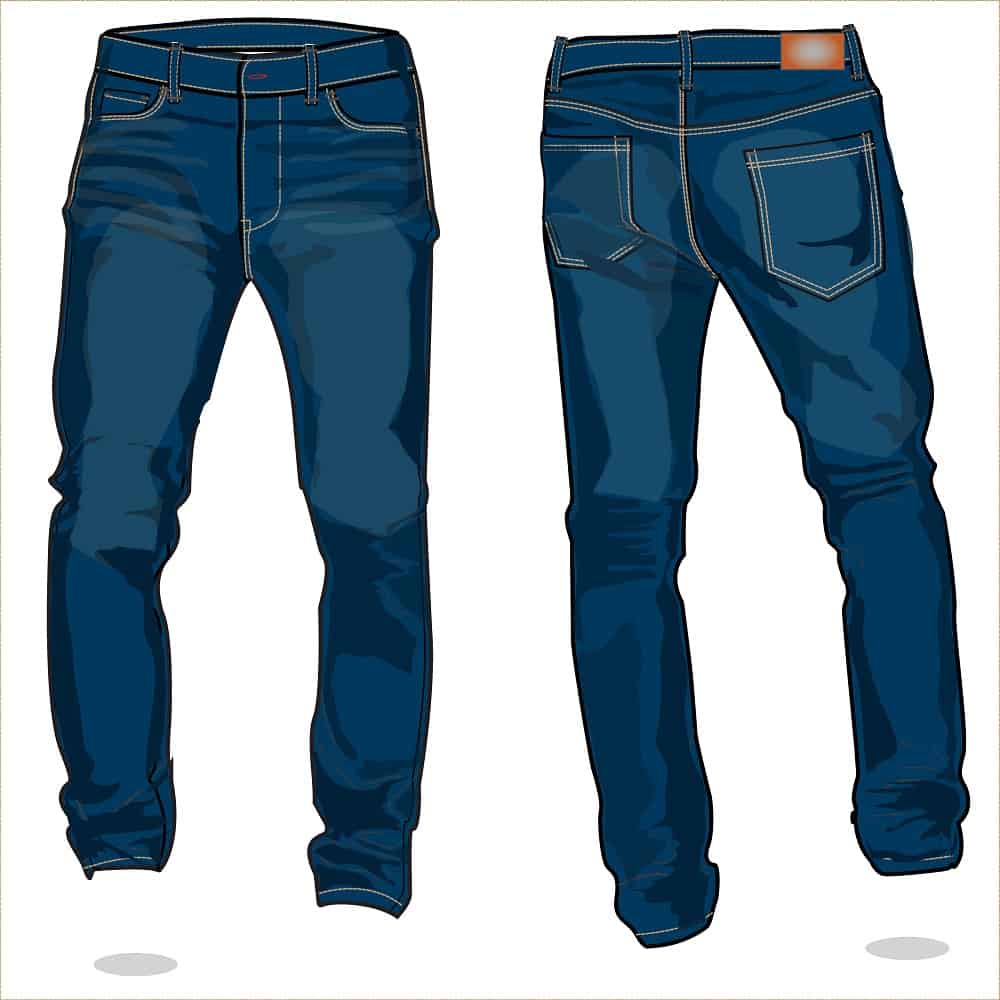
With Davis leading the production team, the design for the pants was highly refined. He created some traditional features that are still associated with blue jean styles today, coming up with the five-pocket design, the extra stitching at the top of the jeans and the leather patch on the back.
The fledgling partnership of Jacob Davis and Levi Strauss was now making enough money to open up a dedicated factory. There was a huge demand for workwear, and Levi Strauss and Jacob Davis were filling it.
1890
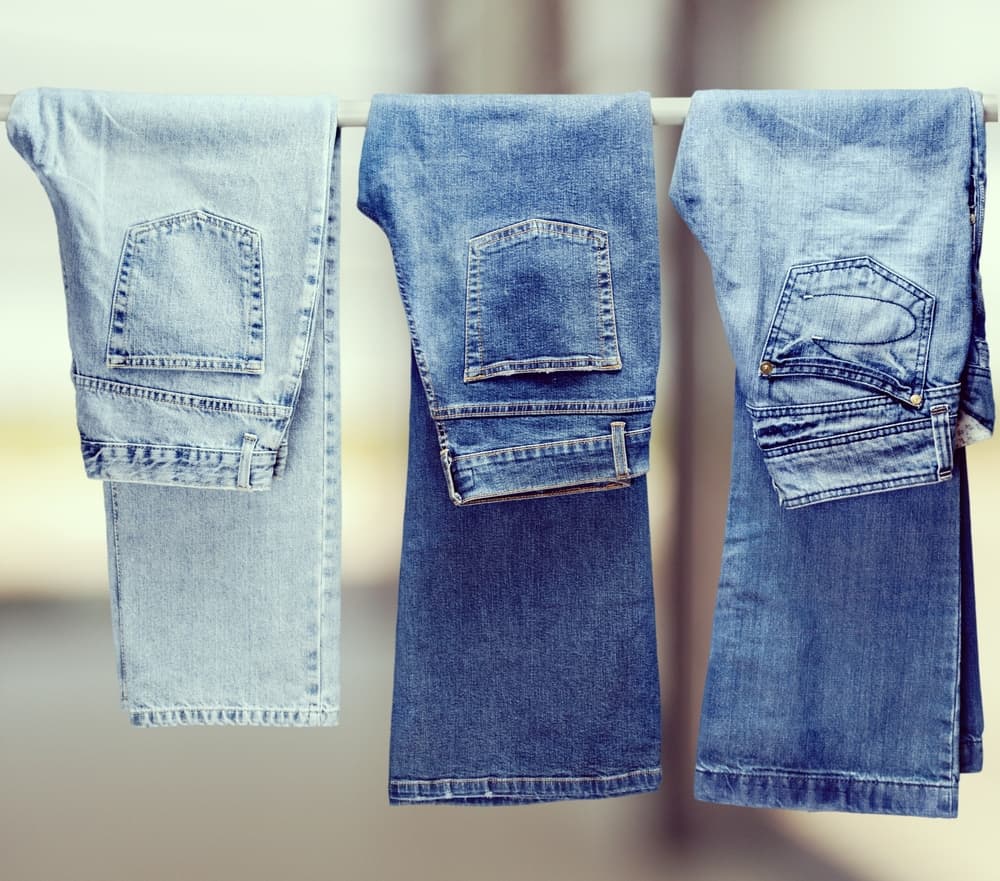
The pants became incredibly popular thanks to the distribution provided by Levi Strauss. His store sold items to buyers all over the West Coast, including other merchants. The pants spread quickly across the U.S.
More improvements were made. The tough duck fabric was replaced with something more flexible and more comfortable: blue denim fabric. With this decision, the world was for ever changed. This is what put the “blue” in blue jeans…even though they were still being called “waist overalls” at this point. The denim jean as people know it today had truly been created, but it had yet to be named.
The brown duck fabric that had been used and the new blue denim fabric were both hot sellers. For a time, the two were fairly equal in their popularity. But when the new 501 style was unveiled in the blue denim made with indigo dye, they soared to the top of the heap as the most sought-after pants offered by Levi Strauss & Co.
In 1890, the original patent for jeans ran out. This opened the door for others to copy the design and sell their own jeans. In 1895, OshKosh B’Gosh was formed and began selling their own spin on the popular miner’s pants. Not only were denim jean styles born, but the blue jean business was truly born at this time, too. Levi Strauss & Co. had some competition in the trousers business for the first time.
1900
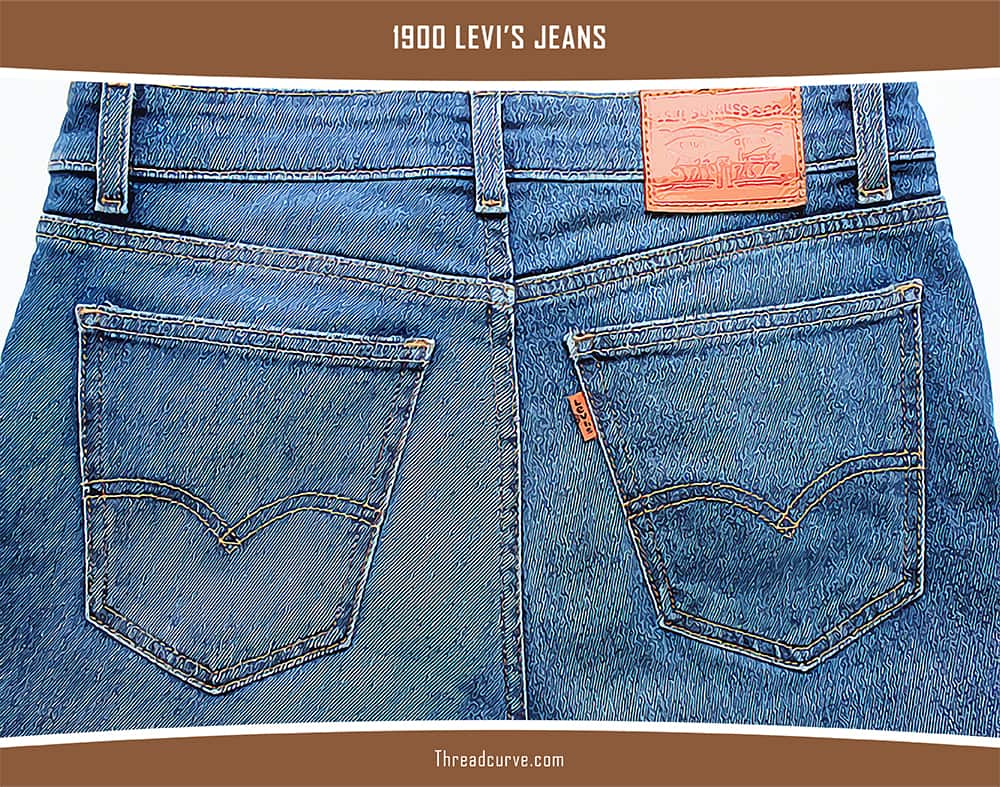
The Levi Strauss company roared into the new millennium with a hot product and hot prospects for the future, though the decade was marred by a dark day in 1902 when Levi Strauss passed away.
1901: Another important step in the history of jeans occurred in this decade in 1901. This is when two back pockets appeared on the pants for the first time.
1904: A new contender for the top crown of jeans-seller entered the arena: Blue Bell. The company would later change its name to Wrangler. But even without namesake Levi Strauss at the helm, the company now best-known for selling pants continued creating its popular product.
1910
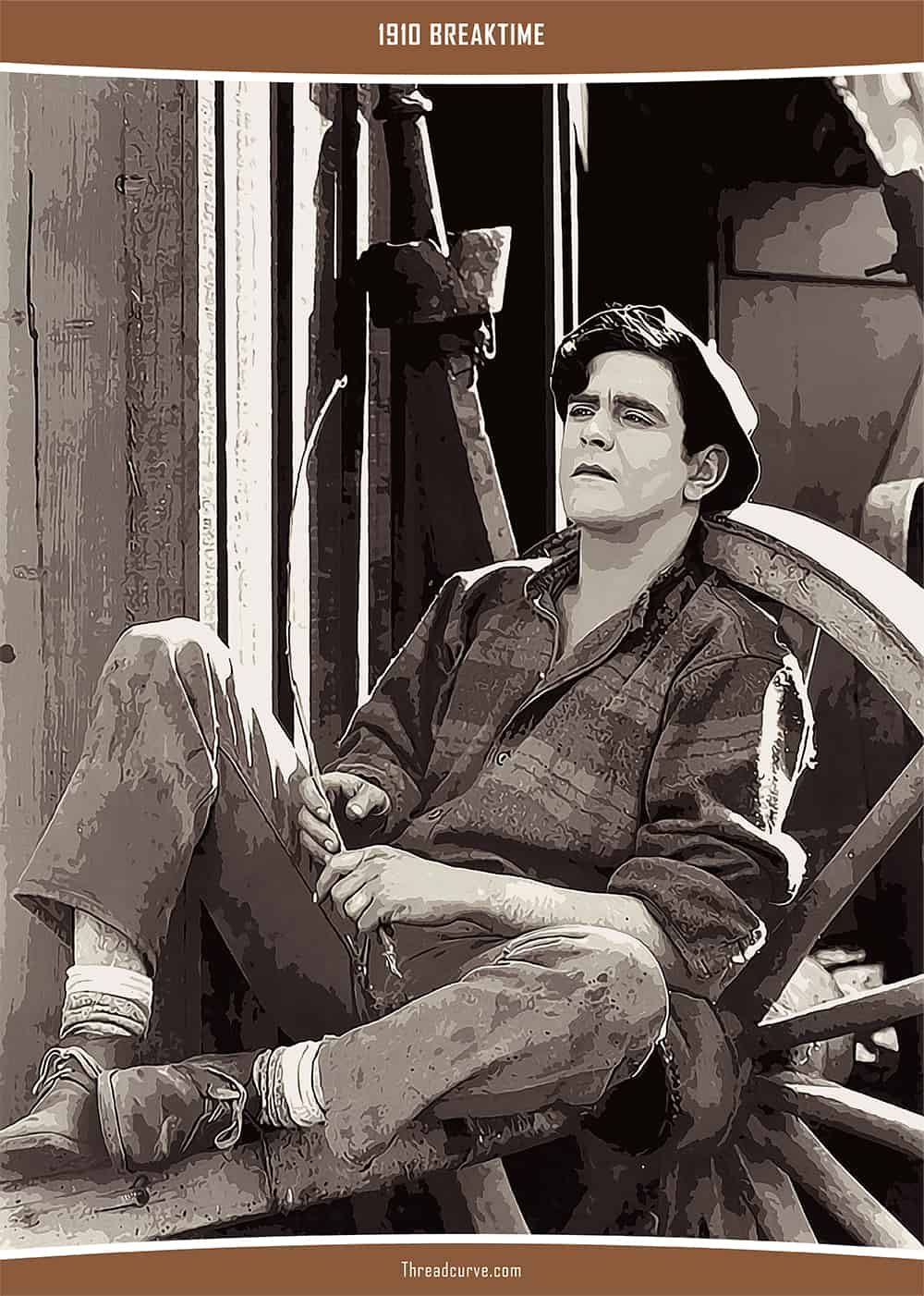
Union-All jeans, made by Lee, became part of the standard uniform for all war workers during WWI. They had started as trousers for miners, but now workers of all types were wearing denim fabric blue jeans. They were seen on farms, ranches and rugged workplaces of all kinds.
1920
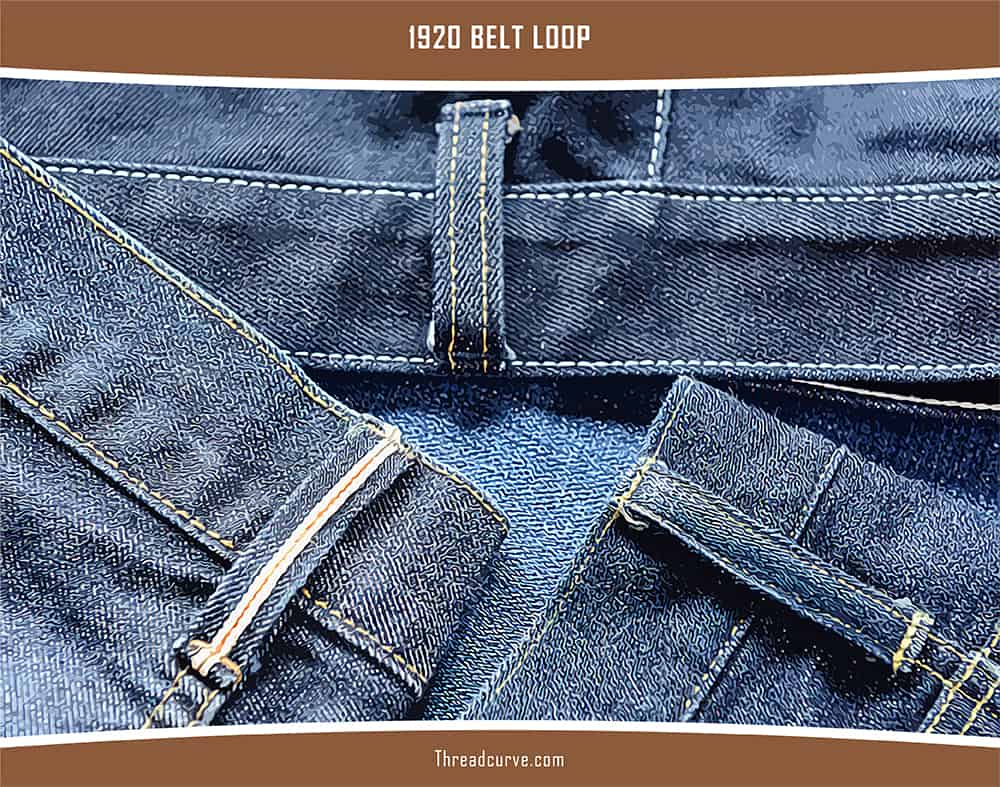
New innovations came to denim jeans in 1922, when belt loops appeared on the waistband for the first time. Before this, they were typically tightened at the waist with a piece of rope. The belt loops allowed for the wearing of actual belts, which streamlined the look of jeans a great deal.
Jeans also appeared in a new medium that was sweeping the country and would soon take the world by storm: movies. Rising stars like John Wayne wore them in early cowboy movies, popularizing the look and cementing the idea that cowboys and blue jeans just naturally belong together.
Another historical event was set to create enormous changes all across the U.S. when the 19th Amendment passed in 1920, finally and permanently granting women the right to vote. This new right immediately influenced fashion, as women celebrated this important step forward and this milestone achievement. To them, it was freeing. Their fashion became more free as a result.
Jeans were now sold all over the U.S., accessible to everyone in the country for the first time.
1930

Refusing to let the men have all the fun, Hollywood’s silver screen queens jumped on the jeans bandwagon. Carole Lombard and Ginger Rodgers were photographed wearing blue jeans and soon, women all over the U.S. wanted to wear them, too.
“Vogue” called jeans “Western chic,” cementing their status as highly fashionable women’s wear. The market exploded and now, it was clear that anyone and everyone could enjoy wearing jeans. They were no longer just men’s jeans. Coming out of the strict rules and restrictions of the past, women were ready to make a bold fashion statement.
Women’s jeans in this decade were wide leg jeans styles and sat at the natural waist with a very low crotch. The excess fabric kept the look very modest and mirrored the dress silhouettes that were popular at the time. Women’s skinny jeans wouldn’t appear for a while.
1940

Until the 1940s, jeans were still mostly worn as workwear and very casual wear. Sure the fancy Hollywood types were wearing them, but jeans still hadn’t transitioned into must-have mainstream fashion. This began to change thanks to the county’s newest obsession: the Wild West. People got nostalgic for stories about cowboys.
Vacations out west were popular at this time. And the best possible souvenir of a western trip? Blue denim jeans, of course. More people started wearing jeans to capture that real western look. Suddenly, jeans became trendy.
They also became international. Worn by American soldiers stationed throughout Europe and Japan during WWII, jeans became a symbol of U.S. fashion. Soon, British soldiers were wearing the denim pants in their off-duty hours and the style began to spread across the globe. The tough but comfortable cotton fabric was durable and felt great and soon, jeans were everywhere.
1950
1954: Jeans got another upgrade when the button fly started to disappear in favor of the zipper fly.
Denim jeans also got a new persona when young, hot Hollywood actors started being seen everywhere in jeans. Marlon Brando and James Dean paired them with white T-shirts and a rebellious attitude that turned them into huge sex idols and turned jeans into a sexy piece of clothing.
When Marilyn Monroe wore a pair of denim jeans in the western-themed movie “River of No Return,” women all over the country saw them as sexy, too. Early rock and rollers also slipped into jeans while playing hot guitar licks.
Jeans in this decade were made in a straight leg, somewhat boxy style that wasn’t super form-fitting. It was trendy to wear them long and cuff them at the bottom, using the natural color of the fabric to create a two-tone look.
1960
Jeans got bigger in the 1960s when bell-bottom styles emerged on the fashion scene. Blue jeans were embraced by the hippies, who represented anti-establishment values. Wide, flare jeans bottoms were popular throughout this decade and the next.
It was in this decade that jeans became widely known as jeans. Until now, they were still called waist overalls more than anything else. Teens started referring to them as jeans in the 1950s and by the 1960s, this was the word commonly used to describe these hard-wearing, stylish cotton denim pants.
1964: Jeans were added to a permanent collection at the Smithsonian Institution in Washington, D.C., cementing their important history in fashion. This was no longer a fashion trend. Jeans had become historic.
1966: Despite its long history as an American business, the first-ever Levi jeans commercial didn’t air until now. In new styles introduced this year, some of the rivets were removed and replaced with bar tacking, which is a stitching technique that reinforces clothing. By this time, however, the copper rivet had become such a known feature of blue jeans that many, many different styles were still made using the metal rivet technique even when stitching techniques made them redundant.
Patches on jeans became popular in this decade. They appeared all over jeans in different colors, sizes and shapes. Jeans had come a long, long way from those early riveted pants.
1970
This was the decade that jeans went designer. They also become far more form-fitting. Dark denim appeared as well, creating a distinct and new look that gave jeans an extra level of sophistication. Calvin Klein debuted a pair of his designer jeans on the fashion runway, the first designer to do so. Gloria Vanderbilt introduced her iconic denim jeans in 1979, becoming a hugely popular name on the fashion scene. Now that designers were involved, the history of jeans became even more glamorous.
Toward the end of the decade, jeans abruptly slimmed down as another counterculture movement caught on: punk rock. The Ramones appeared on the cover of their 1976 album wearing straight leg Levi 505 jeans that were more slim-fitting and now paired with leather and metal accents. A new trend was born and jeans took on a brand-new shape. This slim fit jean look was the start of the skinny jean trend that would soon appear in fashion in a big, big way.
Embroidery, beads and sequins were used to embellish denim jeans. They had become a canvas for people to express themsevles, and people embraced the trend of customizing their jeans. It also became cool for jeans to be ripped, torn or even cut up as punk rock fashion took root in both Europe and the U.S.
1980
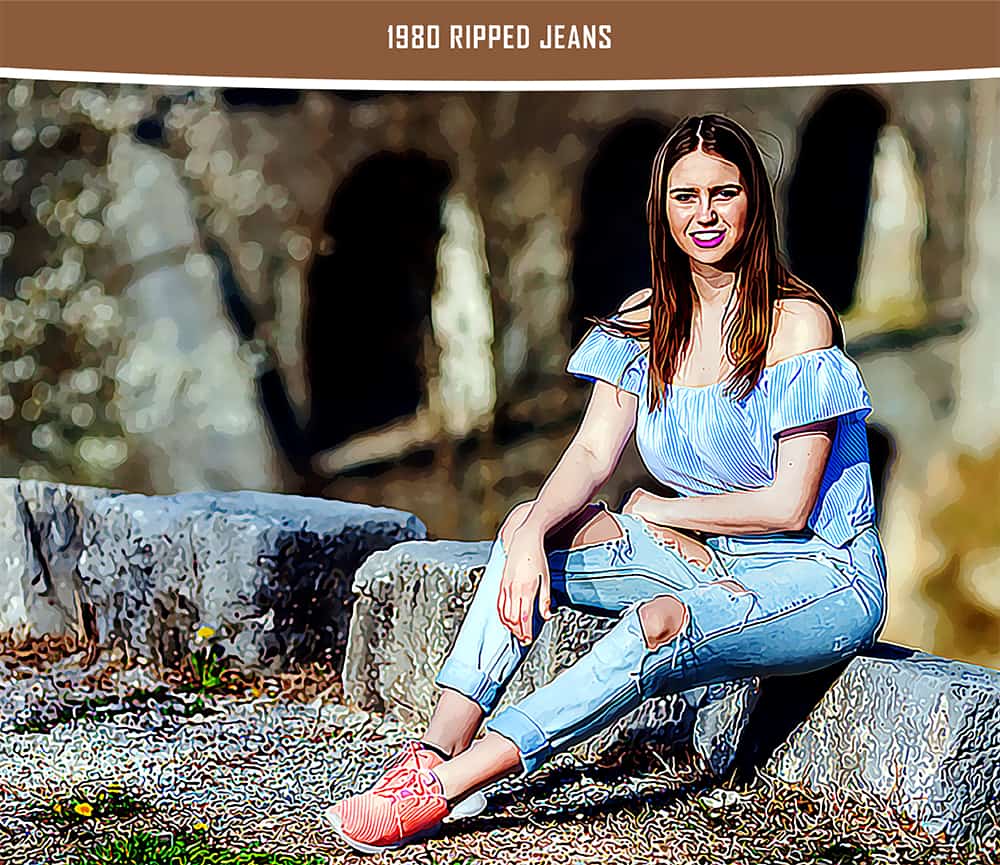
If jeans went designer in the 1970s, they became couture in the 1980s. This is when even high-end designers began creating their own jeans. Guess, Dolce and Gabbana and many other big-name designers all put their names on jeans. A new chapter in the history of jeans had been written. Now, they were high fashion.
Jeans advertising exploded at this time, as many of Hollywood’s young stars and hot models began appearing in print and TV ads for various labels.
The tight, high-waisted jeans look caught fire in the style world. Tapered leg and cropped styles appeared. Ripped jeans became even more popular in this decade, with younger people embracing the fashion trend of tearing up their jeans to make them look cool.
Denim underwent an evolution during this decade, too. The material had gone from light to dark to every shade in-between. In the 1980s, a new world of style opened up when acid-wash, stone-wash and other new denim jean looks were born. Stone and acid washing jeans gave them a distinct mottled look that definitely made a fashion statement. These early washing jeans treatments were the forerunners of a later fashion trend: distressed denim.
By this decade, the denim jacket and other denim fabric items, such as denim overalls, were all over the fashion world. The cloth that was a mistake had become a top choice for pants, bib overalls, dungaree styles and every clothing item you can imagine.
1990
The form-fitting denim jean styles of the previous two decades started looking ridiculous when style took another dramatic turn. Jeans became much baggier. Hip-hop and grunge looks, the counterculture styles of their day, embraced big, baggy jeans styles.
Flared jeans and wide leg styles returned in this decade as well. Jeans were high-waisted at this time, typically sitting above the belly button. High waisted jeans from this time were called “mom jeans” or “mom jean styles.” Ripped and worn-out jeans continued to be popular, leading toward a new creation: distressed denim jeans.
In this decade, jeans also became tool for activists thanks to events like Denim Day. Set to take place on the last Wednesday of every April beginning in the 1990s, Denim Day is a visual show of solidarity, through fashion, for victims of sexual assault. The event started after a specific court case in which an attacker asserted that he could not have engaged in sexual assault because his victim’s jeans were so tight, the act would have had to be consensual.
2000

Jeans waistlines dropped in this decade…by a lot. Super low-rise jeans became super trendy and they’re still on the style scene. Form-fitting, baggy, flared leg, fitted. In this decade, it was anything goes with jeans and any style was suddenly possible. They are both high-end and made for everyday blue-collar workers. They are super stylish and fashionable and comfy and worn. They’re worn for hard jobs and they’re worn on red carpets. They can be workwear, casual wear or a totally high-end fashion trend.
Decorations also began to appear on jeans again at this time. Sparkles, crystals, sequins and extra metal embellished the denim, adding yet another new element to this now age-old design.
Popular elements from the past, such as flared legs and boot-cut styles, also returned on the fashion scene. Very big belt loops also appeared at this time, allowing for much wider belts to be showcased.
At the turn of the millennium, jeans had gone from simple work pants to an extremely popular product made in all sorts of different styles. By this time, distinct and specific styles of blue jeans were everywhere, from boyfriend jeans to carpenter jeans to vintage denim styles. Blue jean style had gone way, way past simple ripped jeans, dark denim and cuffs.
2010
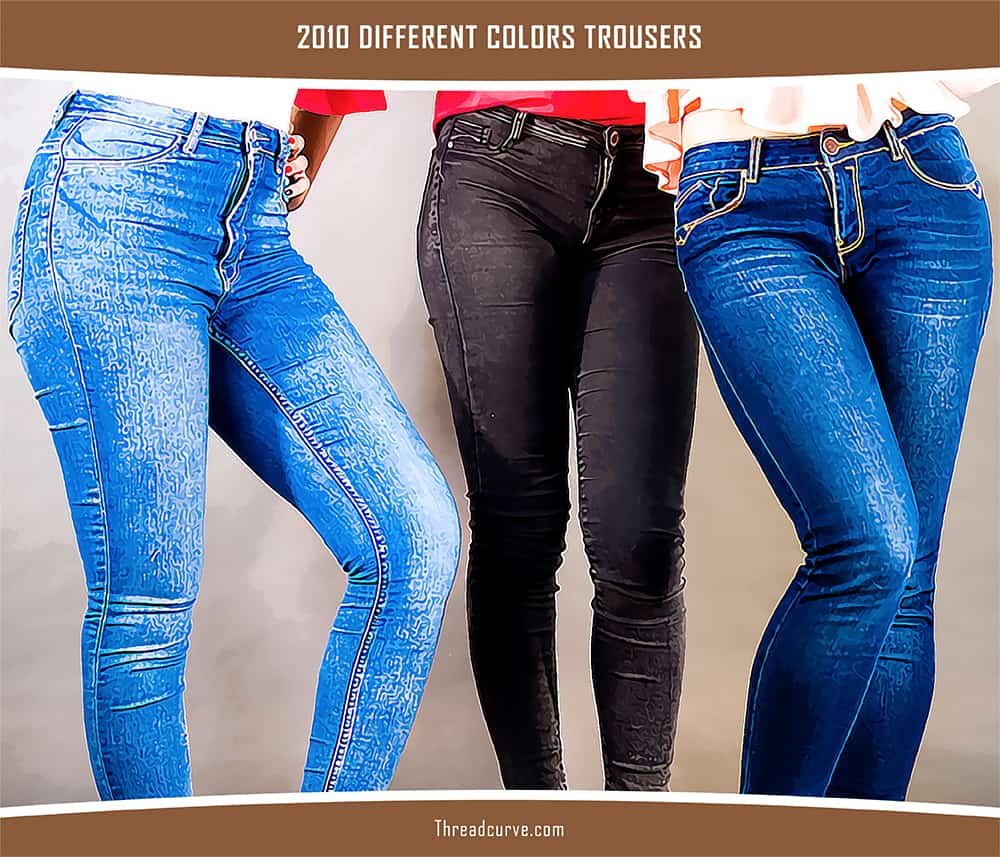
Completely rejecting the super baggy styles worn by the trendsetters of decades past, the youth culture in this decade embraced skinny jeans. Really, really skinny jeans. Silhouettes got even more close-fitting than ever before.
High-waisted jeans also came back in style this decade, rising several inches above the super low-rise styles that were popular the decade before.
2020
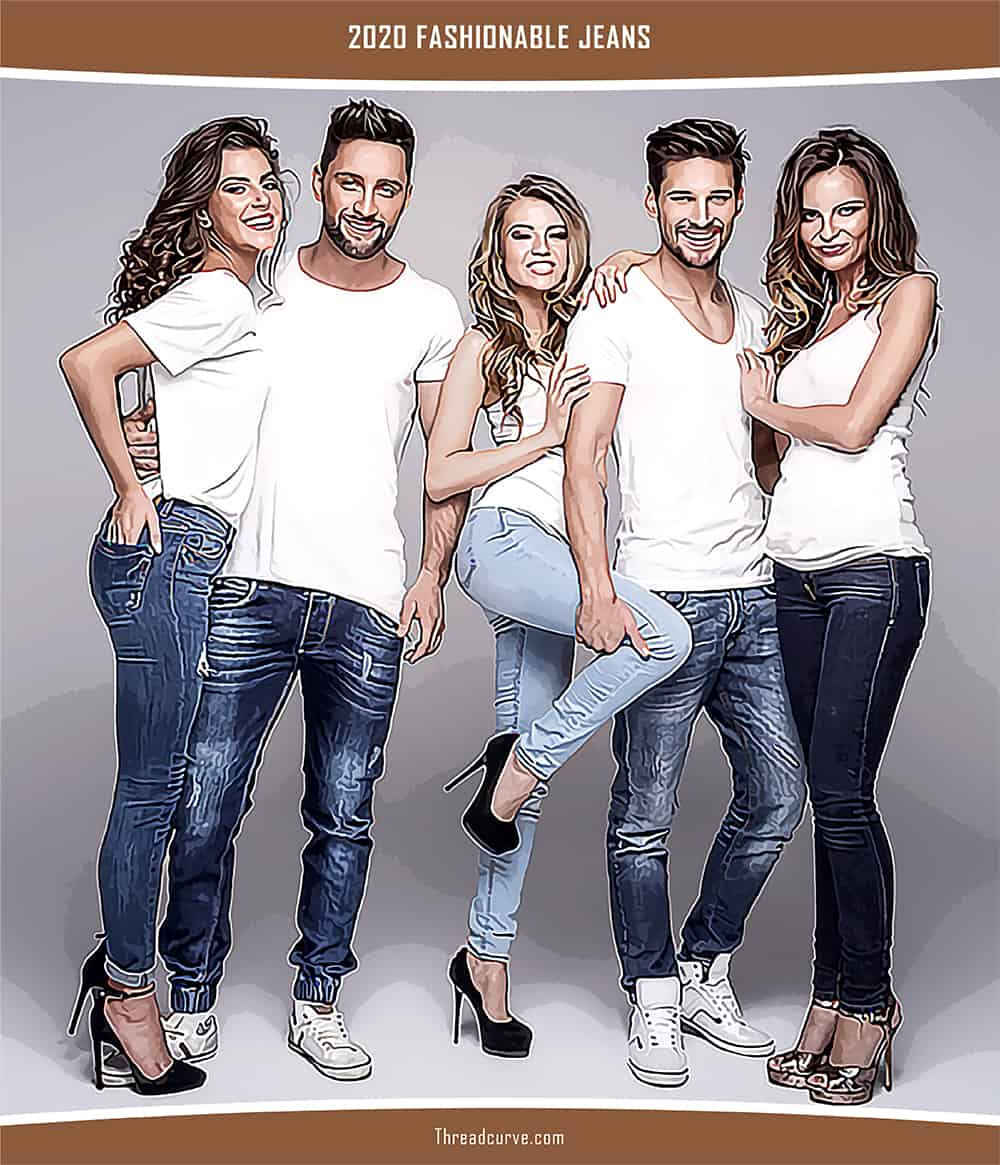
Boot-cut and flared leg styles are back in the 2020s, along with super cropped, wide-leg looks. Waistlines are back up to the natural waist again, with many trendy styles sitting right at the belly button. Skinny jean styles are still in fashion in this decade and the distressed look is still going strong.
With environmental concerns on the rise, jeans companies began looking for new techniques, materials and talking points for their denim jeans designs. Sustainably sourced materials and eco-friendly features began to appear in style more and more in this decade.
More than 100 years after the death of Levi Strauss, his name is still synonymous with blue jeans. To this day, “Levi’s” is used in place of the word “blue jeans.” Levi’s jeans are still known around the world, though the real history of this never-ending fashion trend isn’t very well known at all.
Jeans are the ubiquitous choice for both casual comfort, sexy style, cool fashion and high style. U.S. customers purchase 450 million pairs of denim jeans every year, on average, in this decade. On average, each and every single American shopper has at least seven pairs of jeans in their closet.
References:
BBC: Jean genie: The denim evolution
Business Insider: The most popular denim trend the year you were born
Byrdie: The History of Jeans
CNN: Blue jeans celebrate 140 years
Hawthorn: History of Denim & the Origin of Jeans
History: This Day in History May 20, 1873
Sew Guide: {History of blue jeans}- Some fascinating facts
Sewport: The Remarkable History Of Denim (How It Became an Icon in Fashion)
The Trend Spotter: 90s Fashion (How to Get the 1990s Style)
Vogue: Vogue encyclopedia: The history of denim jeans
Wearing History: A Primer: 1930’s-1950’s Trousers & Pants For Women
Who What Wear: So These Are the Jeans We’ll All Be Wearing This Year




